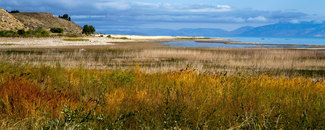
According to the September 24, 2019, U.S. Drought Monitor, moderate to extreme drought covers 16.2% of the United States including Puerto Rico, an increase from last week’s 13.7%. The worst drought categories (extreme to exceptional drought) decreased from 0.5% last week to 0.4% this week.
A strong ridge of high pressure anchored over the southeastern United States and a trough of low pressure was over the West. The high-pressure ridge, with its stable descending air, inhibited precipitation, cleared the skies, and kept temperatures hot. This continued lack of rain and persistently high evapotranspiration led to a rapid expansion and intensification of drought from the Ohio Valley and Mid Atlantic to Gulf Coast States. The ridge stretched into the northeast United States and eastern Canada, with warmer-than-normal temperatures extending across the United States east of the Rockies and drier-than-normal weather spreading into the Northeast.
Pacific weather systems migrated into the western trough, bringing beneficial precipitation to the Pacific Northwest but heavy rains to parts of the northern and southern Plains to western Great Lakes. The western trough and Pacific fronts helped keep temperatures cooler than normal across the West. Moisture from the remnants of Hurricane Lorena brought rain to parts of Arizona near the end of the week.
The high-pressure ridge over the Southeast helped keep Hurricane Humberto out over the Atlantic Ocean and away from the contiguous United States, but it also steered Tropical Storm Imelda across the Gulf of Mexico into the Texas coast, where moisture from the tropical cyclone’s slow-moving remnants brought flooding rains to parts of eastern Texas. Drought and abnormal dryness contracted where above-normal precipitation fell in parts of the Northwest, southern Plains, and Mid-Mississippi Valley, as well as western parts of southern coastal Alaska. But widespread expansion of drought and abnormal dryness occurred east of the Mississippi River and in parts of Texas and Colorado.
Abnormal dryness and drought are currently affecting over 149 million people across the United States including Puerto Rico—about 48.1% of the population.

The full U.S. Drought Monitor weekly update is available from Drought.gov.
In addition to Drought.gov, you can find further information on the current drought as well as on this week’s Drought Monitor update at the National Drought Mitigation Center. See their recent news releases.
The most recent U.S. Drought Outlook is available from NOAA’s Climate Prediction Center and the U.S. Department of Agriculture provides information about the drought’s influence on crops and livestock.
For additional drought information, follow #DroughtMonitor on Facebook and Twitter.



